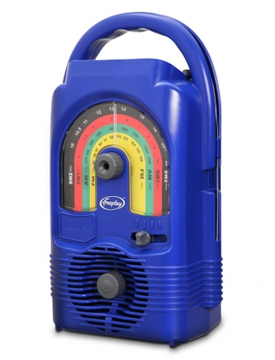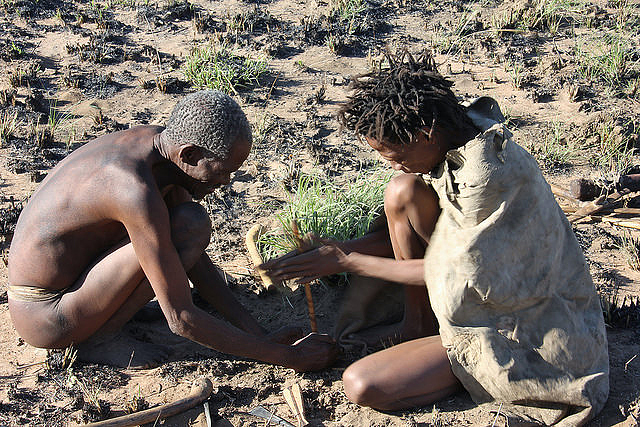The press in Namibia reported last week that the Nyae Nyae Conservancy had just held its annual meeting, with representatives from all 37 Ju/’hoansi villages attending. The major order of business was distributing a new solar-powered Lifeline radio to each village.

The website for the Lifeline radio indicates that it is designed for remote locations in developing countries. Provided with a 4-inch speaker, the radio is designed for groups of villagers to sit together and listen to broadcasts from remote stations. A detachable solar panel is included which allows it to be placed in the sun with the radio located in the shade or even indoors. A battery encourages people to use it at night, and a winding crank is included on the back for use on cloudy days. The manufacturer clearly was thinking of severe Kalahari Desert conditions: “The internal mechanisms are free from grease to ensure the radio operates even in very dusty and arid environments.”
Since villages in the conservancy lack electricity, the alternative sources of power for the radios are essential. The radios pick up AM, FM, and short wave broadcasts. Another feature, according to the news story, is that they have USB ports that will allow the villagers to charge their phones. That feature will assist in communications among the villages, as well as help the Ju/’hoansi report illegal fencing and grazing in the conservancy.
The radios, funded by the European Union with their EU Climate Change Adaptation Grant program, are intended to help the San people adapt as well as possible to the effects of changing climate conditions and to diversify their livelihoods as a result. The Nyae Nyae Conservancy hopes the villagers will listen to broadcasts about strategies for improving conservation agriculture, fire management, food security, and other similar information.

The tourist villages in the Conservancy, where Ju/’hoansi can be engaged to do traditional things such as start fires in the old way, will have to decide whether to allow their visitors to see and photograph people listening to broadcasts on their new, solar-powered radios. In any case, Lara Diez from the Nyae Nyae Development Foundation of Namibia, which has led the EU Climate Change Adaptation Project, told the press, “The community is very happy with the radios, especially as there is a local NBC radio station, Ka Radio, broadcasting in their local language.”
Ms. Diez added that those broadcasts in the Ju/’hoan language were important for ensuring that no one gets the feeling of being left out. The Annual General Meeting also included annual reports, a discussion of finances, and an agreement on the budget for the coming year. People attending the meeting discussed the achievements of the Conservancy over the previous year and what actions need attention from management personnel in the near future.